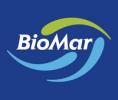This year more dynamic positioning systems (DP) for vessels than ever have been delivered by Kongsberg Simrad. But the company does not think this any reason just to sit on a branch and sing – the product developers are busy hatching out new ideas. This year the company is increasing the development budget by as much as 30 per cent, in the hope of laying new golden eggs. More than ten per cent of an annual turnover in Norway of about a billion kroner is to be spent on transforming bright ideas into top-flight products.
Much of the money is spent on developing new functionality in the DP system. With a market share of 70-80 per cent, Kongsberg Simrad can easily fall for the temptation of tucking its head under its wings for a nap. But big multinationals are investing enormous resources in development of solutions that can knock Kongsberg off its perch. ABB has launched a DP system which they claim is technologically far in advance of the competition. But Kongsberg Simrad has not been idle either, and Technology Director Sverre Gotaas sees nothing to worry about.
“We still have the world’s best DP system. Our competitors must produce totally new technical solutions if they want to beat us – and that, ABB has not done. When the market needs something new,” announces Gotaas, “we will make sure it‘s us who have it.”


A 30 per cent increase in the development budget shows that he is taking the challenge seriously.
First with safety approval
Much of this development money is also going to AIM Safe, which is an umbrella term for Kongsberg Simrad’s investment in safety systems. The solution is – so far as the only one in the world – in the process of being awarded SIL 3 approval under the new safety standard IEC 61508 operated by the German certification house TÜV. SIL stands for Safety Integration Level, and the higher the number, the tougher the standard.
“We are in the final stages of the approval process now,” says Senior Engineering Officer Merethe Gotaas. AIM Safe is totally integrated with the automation system, and gives direct access to control signals. One of the advantages of the system is that it can visualise the safety system’s state of health and provide decision-making support for the operator.
Status reports
“It is made easy for the operator to see how many signal errors there are and how many transitions have been made,” says Merethe Gotaas. “The system can warn that there are too many abnormal conditions in the system for a hot work permit to be issued.”
Autronica’s fire alarm systems are also integrated into AIM Safe. By providing a complete overview of the vessel, where the fire is and how it is spreading, the system can guide the firefighters to the right spot, and evacuate large number of staff by safe routes.
From UNIX to NT
Kongsberg Simrad’s main product is maritime systems for the offshore market and systems for process automation and simulation. These systems are based on common technology and are therefore easy to integrate. The last three years have seen a process of conversion from UNIX to Windows NT as a platform for all systems.
“We tried first to convert the programs, but it didn’t work very well. So we ended up writing quite new programs”, says the Product Manager for vessels systems, Ole Gunnar Hvamb.
The DP systems, which are the company’s biggest money-spinner, were converted first. The systems are used to enable the vessels to keep a precise station at sea without anchors. Last year also saw the appearance of the integrated safety and control system AIM 2000 for the Windows NT platform. Åsgard A was the first to use it. Of the installed AIM systems in operation, most have now been upgraded to NT.
Some of the development money is used now on further development of the screen systems, to wind up an ongoing hardware renewal process and to field bus technology.
“Our systems are being made independent of the big hardware manufacturers. Among other things we have a new solution with distributed units for input and output signals”, says Gotaas.
Combatting riser wear and tear
The Riser Management System (RMS) is a computer system developed in tandem with SeaFlex and CorrOcean.
“Risers are by far the biggest investment in a drilling module,” says RMS Product Manager Øystein Andreassen.. “Now that deepwater drilling is becoming more and more common, some old problems have re-emerged. The operators are worried about wear and tear. And wonder what the risers look like at great depths.”


The RMS measures all relevant data for handling of risers on floating oil and gas product production units, and tells what position the vessel should have to avoid wear and tear on the riser. The vessel’s own positioning system is integrated directly into the RMS.
“The system can also provide information on how much time is available to disconnect from the riser when the vessel drifts off”, explains Andreassen. “Two systems have already been supplied, and new contracts are under way.”
Shortage of testing opportunities
Kongsberg Simrad is also a leading supplier of integrated automation systems (IAS) for ships that carry liquid natural gas (LNG) and is participating in discussions of future IAS designs. Technology Director Gotaas is extremely unhappy with the Norwegian authorities’ negative attitude to building of gas power stations.
“Norway has disqualified itself. There is very little opportunity to test new solutions on the home market”, he grumbles.

